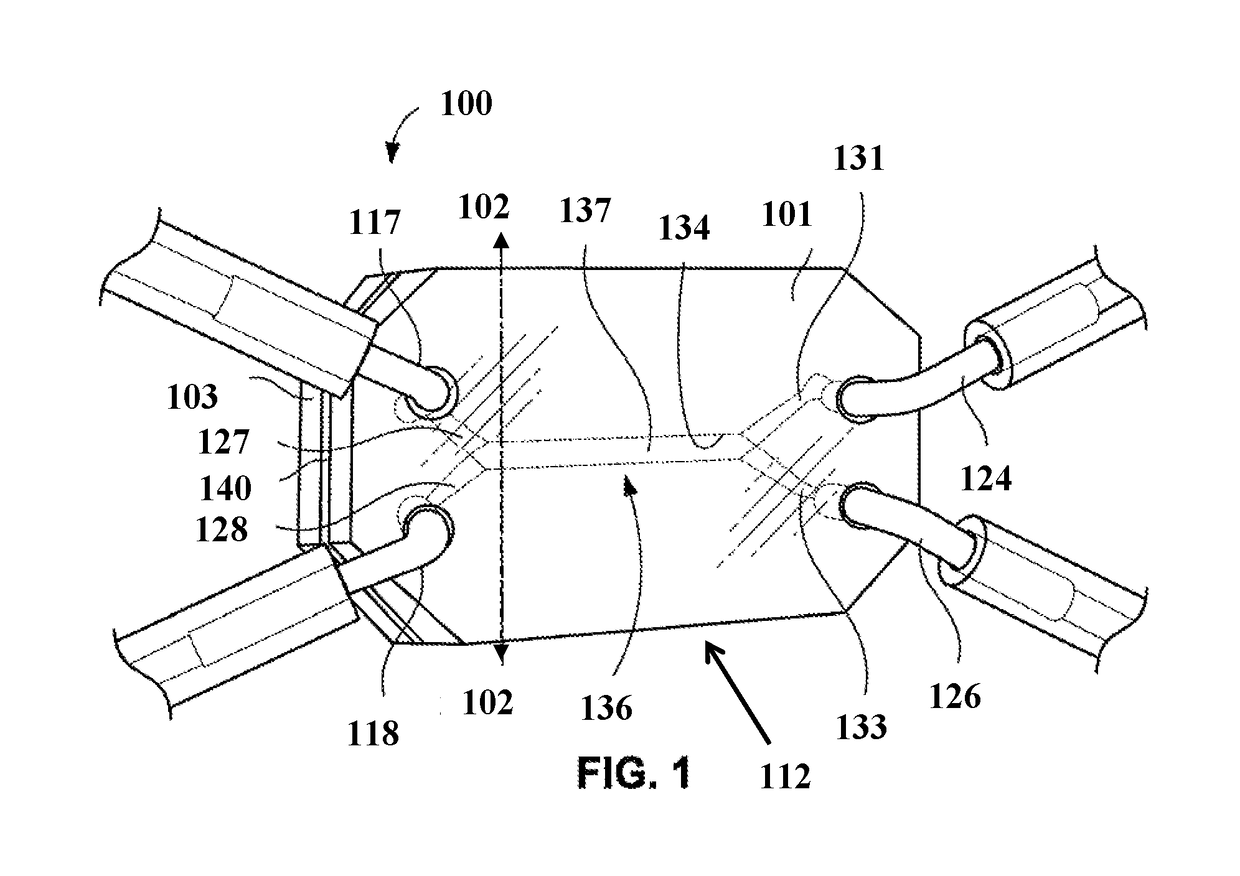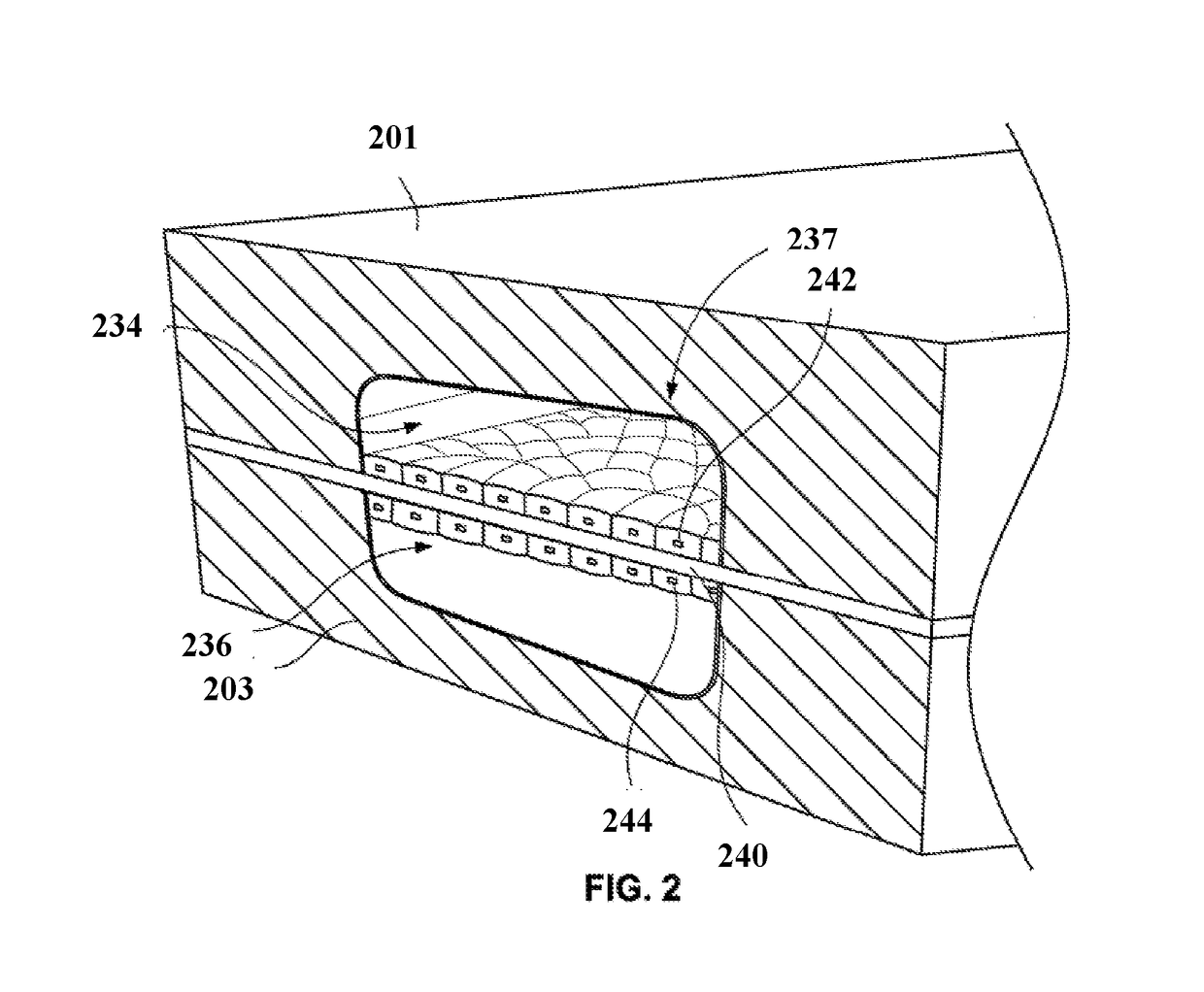Open-top microfluidic device with structural anchors
a microfluidic device and open-top technology, applied in the field of open-top microfluidic devices with structural anchors, can solve the problems of surface delamination and prevent the robust implementation of 3d gels with microfluidic systems
- Summary
- Abstract
- Description
- Claims
- Application Information
AI Technical Summary
Benefits of technology
Problems solved by technology
Method used
Image
Examples
example 1
Keratinocyte and Fibroblast Cell Culture
[0213]This example describes the preparation of keratinocytes, and in particular human foreskin keratinocytes (HFKs). An aliquot of Lonza Gold KGM media (Lonza 192060) is placed in a 50 ml tube (i.e. with 1 cryovial of HFK cells, one needs 12 ml for the flask, 10 ml for the washing step and 1 to 5 ml to break the pellet for a total of about 25 ml). The medium is warmed by putting it into the water bath for 5-10 min and then transferred inside the sterile hood. The needed number of 15 and 50 ml conical tubes are prepared, along with the needed number of flasks. These are filled with the appropriate amount of Lonza medium.
[0214]To thaw the HFKs, a cryovial is removed from the liquid nitrogen container and transferred into the basket containing dry ice. The cryovial is placed into the water bath until the freezing medium inside it is completely melted. The cryovial is sprayed with ethanol and brought to the sterile hood. The cryovial is opened in...
example 2
Embedding Cells In the Dermal Layer
[0218]For embedding fibroblasts into the dermal layer (e.g. gel matrix), the protocol is as follows. First, the fibroblasts are detached using the trypsinization protocol described above. However, the pellet is re-suspended in complete E-medium low calcium (0.6 mM Ca++), supplemented with 0.5% (V / V) FBS (Invitrogen 16140071) and 2% penicillin / streptomycin (invitrogen 15140-122) and then added back to the flasks, where they are allowed to reach 50-60% confluence. Once again, the fibroblasts are detached according to the protocol described above. Once re-suspended, they are embedded into the dermal layer. From Day 0 to Day 1-2, the cells in the dermal layer are fed using complete E-medium low calcium (0.6 mM Ca++), supplemented with 0.5% (V / V) FBS (Invitrogen 16140071) and 100 μm ascorbic acid, RM / TI transglutaminase 50 μg / ml. From Day 1-2 to Day 3-4, the cells in the dermal layer are fed using complete E-medium low calcium (1.2 mM Ca++), supplemente...
example 3
Preparing the Dermal Layer
[0219]First, pipette tips are cooled by putting into refrigerator for 15-30 min (Pipettes need to be cold when working with rat-tail type I collagen in order to avoid coagulation). Both the pipette tips and the ECM matrix should stay in the ice box during the procedure.
[0220]In order to calculate the final volume of rat-tail type I collagen mixture needed, one calculates the number of dermal equivalent cultures that are needed. This calculation is based on 12 well +3 extra (those are needed to compensate for the ECM matrix that adheres to the surface of pipette). Where 2×104 neonatal or adult Human Foreskin Fibroblast per raft are employed and 12+3 rafts are prepared, one needs 15 X 2×104=30×104 fibroblasts (or 300,000 fibroblasts). To impede fibroblasts proliferation, one can irradiate the fibroblast with 70 Gy.
[0221]Now, to make 150 μraft X (12+3) rafts=2.25 ml. 10% 10X DMEM or variants *=0.225 ml or 225 μl 10% reconstruction buffer +=0.225 ml or 225 μl. ...
PUM
| Property | Measurement | Unit |
|---|---|---|
| thickness | aaaaa | aaaaa |
| thickness | aaaaa | aaaaa |
| thickness | aaaaa | aaaaa |
Abstract
Description
Claims
Application Information
 Login to View More
Login to View More - R&D
- Intellectual Property
- Life Sciences
- Materials
- Tech Scout
- Unparalleled Data Quality
- Higher Quality Content
- 60% Fewer Hallucinations
Browse by: Latest US Patents, China's latest patents, Technical Efficacy Thesaurus, Application Domain, Technology Topic, Popular Technical Reports.
© 2025 PatSnap. All rights reserved.Legal|Privacy policy|Modern Slavery Act Transparency Statement|Sitemap|About US| Contact US: help@patsnap.com



